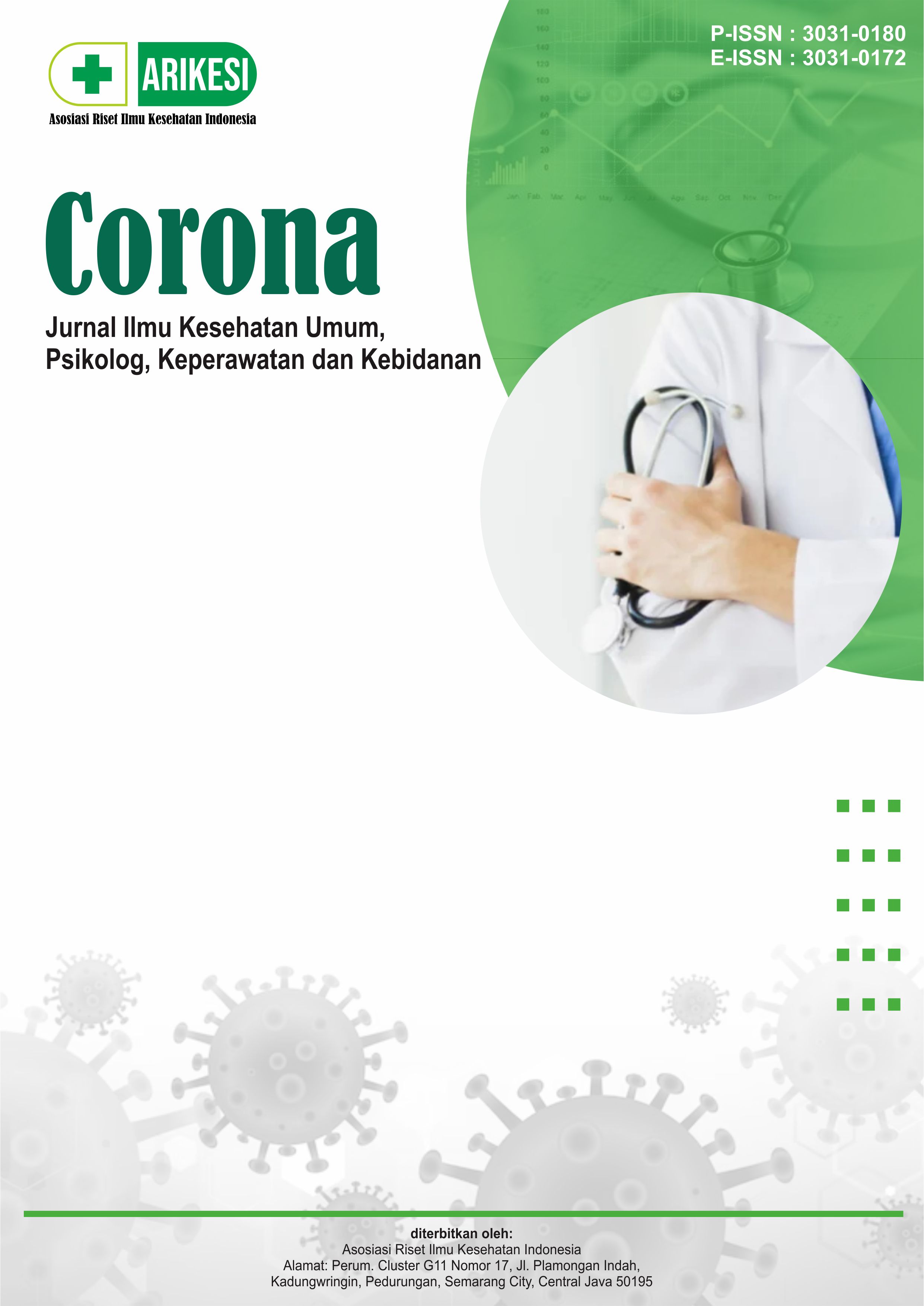Psikometri Kepribadian Kreatif Pada Siswa
DOI:
https://doi.org/10.61132/corona.v1i2.920Keywords:
creative, psychometrics, studentAbstract
Understanding creative personality in students has significant implications for their future success and well-being. The purpose of this study was to describe the development of the Creative Personality Scale in high school students. Data testing was conducted on 275 students in junior and senior high schools. The research process was carried out through five stages to obtain a creative personality measurement tool that met the validity and reliability requirements. Data were analyzed through content validity and construct validity testing. The results of the creative personality scale validity test showed two important findings. First, the results of the content validity test found that there were 24 valid items, with a Cronbach's Alpha value of .898. Second, the results of the construct validity test found that not all modeling criteria could be met. The implications of the findings state that the development of a creative personality scale can make a significant contribution to the field of creativity research and provide a valuable tool for researchers, educators, and practitioners to better understand and foster creativity in high school students.
Downloads
References
Agnoli, S. (2018). The role of motivation in the prediction of creative achievement inside and outside of school environment. Thinking Skills and Creativity, 28, 167–176. https://doi.org/10.1016/j.tsc.2018.05.005
Akpur, U. (2020). Critical, reflective, creative thinking and their reflections on academic achievement. Thinking Skills and Creativity, 37. https://doi.org/10.1016/j.tsc.2020.100683
Atesgoz, N. N. (2021). Test of scientific creativity animations for children: Development and validity study. Thinking Skills and Creativity, 40. https://doi.org/10.1016/j.tsc.2021.100818
Aziz, R. (2023). Creativity in higher education: The effect of personality on students’ creative thinking skills. Thinking Skills and Creativity Journal, 6(1), 44–51. https://doi.org/10.23887/tscj.v6i1.54916
Aziz, R., Surur, M., Lestari, S., Hotifah, Y., & Naim, N. (2022). Lecturer-student collaboration in higher education as a solution for fostering student’s creative personality. Jurnal Pendidikan Progresif, 12(1), 214–253. https://doi.org/10.23960/jpp.v12.i1.202219
Benjamin, E. (2018). The creative artists support group: A therapeutic environment to promote creativity and mental health through person-centered facilitation. Person-Centered and Experiential Psychotherapies, 17(2), 111–131. https://doi.org/10.1080/14779757.2018.1440624
Berardi, A. (2019). Construct validity, test-retest reliability, and the ability to detect change of the Canadian occupational performance measure in a spinal cord injury population. Spinal Cord Series and Cases, 5(1). https://doi.org/10.1038/s41394-019-0196-6
Boivin, J., & Ng, S. (2006). Are more data always better for factor analysis? Journal of Econometrics. https://doi.org/10.1016/j.jeconom.2005.05.001
Chen, B. (2020). Enhance creative performance via exposure to examples: The role of cognitive thinking style. Personality and Individual Differences, 154. https://doi.org/10.1016/j.paid.2019.109663
Cheng, C. (2019). Creative process engagement and new product performance: The role of new product development speed and leadership encouragement of creativity. Journal of Business Research, 99, 215–225. https://doi.org/10.1016/j.jbusres.2019.02.067
Cheung, R. H. P. (2018). Play-based creativity-fostering practices: The effects of different pedagogical approaches on the development of children’s creative thinking behaviours in a Chinese preschool classroom. Pedagogy, Culture and Society, 26(4), 511–527. https://doi.org/10.1080/14681366.2018.1424725
Dugdale, J. (2019). Reliability and validity of field-based fitness tests in youth soccer players. European Journal of Sport Science, 19(6), 745–756. https://doi.org/10.1080/17461391.2018.1556739
El-Said, O. (2019). Creative thinking and entrepreneurial attitudes among tourism and hospitality students: The moderating role of the environment. Journal of Hospitality and Tourism Education, 31(1), 23–33. https://doi.org/10.1080/10963758.2018.1480963
Fatmawati, A. (2019). Critical thinking, creative thinking, and learning achievement: How they are related. Journal of Physics: Conference Series, 1417(1). https://doi.org/10.1088/1742-6596/1417/1/012070
Freiberg-Hoffmann, A. (2019). Creative personality scale: A new version for college students from Argentina. Anales de Psicologia, 35(2), 290–299. https://doi.org/10.6018/analesps.35.2.346131
Garcia, D. (2019). Creative utterances about person-centered care among future health care professionals are related to reward dependence rather than to a creative personality profile. Heliyon, 5(3). https://doi.org/10.1016/j.heliyon.2019.e01389
Glaveanu, V. P., Hanchett Hanson, M., Baer, J., Barbot, B., Clapp, E. P., Corazza, G. E., ... & Sternberg, R. J. (2020). Advancing creativity theory and research: A socio-cultural manifesto. Journal of Creative Behavior, 54(3). https://doi.org/10.1002/jocb.395
Grabner, R. H. (2018). Effects of alpha and gamma transcranial alternating current stimulation (tACS) on verbal creativity and intelligence test performance. Neuropsychologia, 118, 91–98. https://doi.org/10.1016/j.neuropsychologia.2017.10.035
Hidayat, T. (2018). The effectiveness of enrichment test instruments design to measure students’ creative thinking skills and problem-solving. Thinking Skills and Creativity, 29, 161–169. https://doi.org/10.1016/j.tsc.2018.02.011
Downloads
Published
How to Cite
Issue
Section
License
Copyright (c) 2024 Corona: Jurnal Ilmu Kesehatan Umum, Psikolog, Keperawatan dan Kebidanan

This work is licensed under a Creative Commons Attribution-ShareAlike 4.0 International License.





